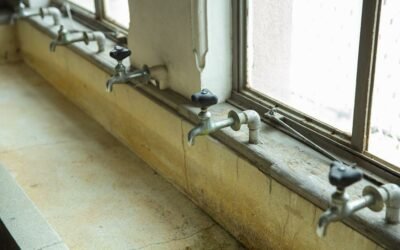Are you concerned about the presence of carbon monoxide in your home? An air purifier can help keep you safe.
In this article, we will explain how air purifiers remove carbon monoxide and provide tips on choosing the right one for your needs.
With the right air purifier, you can effectively combat the dangers of carbon monoxide and breathe cleaner, healthier air.
Stay informed and protect yourself with an air purifier designed to remove carbon monoxide.
Key Takeaways
- Carbon monoxide is a colorless, odorless gas that can be produced by incomplete combustion of fossil fuels.
- Inhaling carbon monoxide can lead to symptoms like headache, dizziness, nausea, and confusion.
- Carbon monoxide binds to hemoglobin in the blood, preventing oxygen from reaching vital organs.
- Air purifiers with activated carbon filters can effectively remove carbon monoxide from the air, ensuring clean and safe breathing environment.
Understanding Carbon Monoxide
You should frequently understand the dangers of carbon monoxide. Carbon monoxide (CO) is a colorless, odorless gas that can be extremely harmful to your health. It's produced by the incomplete combustion of fossil fuels, such as gasoline, natural gas, and coal. When inhaled, carbon monoxide binds to hemoglobin in your blood, preventing it from carrying oxygen to vital organs and tissues. This can lead to symptoms like headache, dizziness, nausea, and confusion. In high concentrations, carbon monoxide can be fatal.
It is important to be aware of the potential sources of carbon monoxide in your home. Common sources include faulty gas appliances, car exhaust fumes, and improperly vented wood-burning stoves or fireplaces. To protect yourself and your family, it's recommended to install carbon monoxide detectors in your home. These devices can detect the presence of carbon monoxide and sound an alarm to alert you. Regularly check and replace the batteries in your carbon monoxide detectors to ensure they're functioning properly.
The Dangers of Carbon Monoxide
Carbon monoxide poses significant dangers to your health and should be taken seriously. This odorless and colorless gas is produced by incomplete combustion of fuels such as gasoline, natural gas, and wood.
Here are three key dangers associated with carbon monoxide:
- Health effects: Breathing in carbon monoxide can lead to a range of symptoms, including headaches, dizziness, nausea, confusion, and even loss of consciousness. Prolonged exposure to high levels of carbon monoxide can be life-threatening and may result in permanent brain damage or death.
- Carbon monoxide poisoning: Carbon monoxide is often referred to as the 'silent killer' because it can quickly build up in enclosed spaces without being detected. It can leak from faulty heating systems, gas appliances, or blocked chimneys. It's crucial to have carbon monoxide detectors installed in your home to provide an early warning if levels become dangerous.
- Prevention: To protect yourself and your loved ones from the dangers of carbon monoxide, it's essential to take preventive measures. Regularly inspect and maintain fuel-burning appliances, ensure proper ventilation, and never use portable fuel-burning devices indoors. Educate yourself about the signs of carbon monoxide poisoning and take immediate action if you suspect exposure.
How Air Purifiers Remove Carbon Monoxide
Air purifiers effectively remove carbon monoxide from the air by filtering it out through their advanced filtration systems. These systems are designed to capture and trap harmful pollutants, including carbon monoxide, ensuring that the air you breathe is clean and safe.
The process begins with the intake of air into the purifier. The air passes through a pre-filter, which captures larger particles and helps to prolong the lifespan of the subsequent filters.
Next, the air moves through a carbon filter, also known as an activated carbon filter. This filter is specifically designed to remove gases, odors, and volatile organic compounds, including carbon monoxide. The activated carbon has a large surface area that attracts and adsorbs these gases, effectively removing them from the air.
After passing through the carbon filter, the air undergoes further filtration to remove any remaining particles or contaminants. This can include a HEPA filter, which traps microscopic particles like pollen, dust mites, and pet dander, ensuring that the air isn't only free of carbon monoxide but also allergens and other pollutants.
Choosing the Right Air Purifier for Carbon Monoxide Removal
When selecting an air purifier to remove carbon monoxide, it's important to consider the specific features and capabilities of the device. To ensure you choose the right air purifier for carbon monoxide removal, follow these three guidelines:
- Look for a purifier with a high-quality activated carbon filter:
Carbon monoxide is a gas that can be effectively captured and removed by activated carbon. Make sure the air purifier you choose has a filter specifically designed to remove carbon monoxide. This will ensure that the gas is effectively trapped and prevented from circulating in your indoor air.
- Consider the size and capacity of the purifier:
The size of the room or area you want to purify will determine the size and capacity of the air purifier you should choose. Make sure the purifier is capable of effectively cleaning the air in the space where carbon monoxide is present. Larger rooms may require purifiers with higher air flow rates and larger carbon filters.
- Check for additional features and certifications:
Some air purifiers come with additional features such as automatic sensors that detect carbon monoxide levels and adjust the purification settings accordingly. Look for purifiers that are certified by reputable organizations such as the Association of Home Appliance Manufacturers (AHAM) or the California Air Resources Board (CARB), as these certifications ensure that the purifier meets strict standards for performance and safety.
Tips for Using an Air Purifier to Combat Carbon Monoxide
To effectively combat carbon monoxide, use a high-quality air purifier with an activated carbon filter. Here are some tips for using an air purifier to combat carbon monoxide:
- Place the air purifier strategically: Position the air purifier in a central location within the room to ensure maximum coverage and effectiveness.
- Keep the air purifier running continuously: Carbon monoxide is a persistent threat, so it's crucial to keep the air purifier running 24/7 to maintain clean and safe air quality.
- Regularly clean and replace filters: The activated carbon filter in the air purifier is designed to trap and remove carbon monoxide particles. Be sure to clean or replace the filter as recommended by the manufacturer to maintain optimal performance.
Here is a table summarizing the tips for using an air purifier to combat carbon monoxide:
| Tips | Explanation |
|---|---|
| Place the air purifier strategically | Position the air purifier in a central location within the room for maximum coverage and effectiveness. |
| Keep the air purifier running continuously | Ensure the air purifier is running 24/7 to maintain clean and safe air quality. |
| Regularly clean and replace filters | Clean or replace the activated carbon filter as recommended by the manufacturer to maintain optimal performance in trapping carbon monoxide particles. |
Conclusion
In conclusion, air purifiers are an effective tool for combating carbon monoxide in indoor environments. By utilizing advanced filtration systems, these devices can efficiently remove harmful carbon monoxide particles from the air, ensuring a safer living space.
When selecting an air purifier for carbon monoxide removal, it's essential to consider the specific features and capabilities of the device.
By following proper usage guidelines and regularly maintaining the air purifier, individuals can effectively protect themselves from the dangers of carbon monoxide.






0 Comments